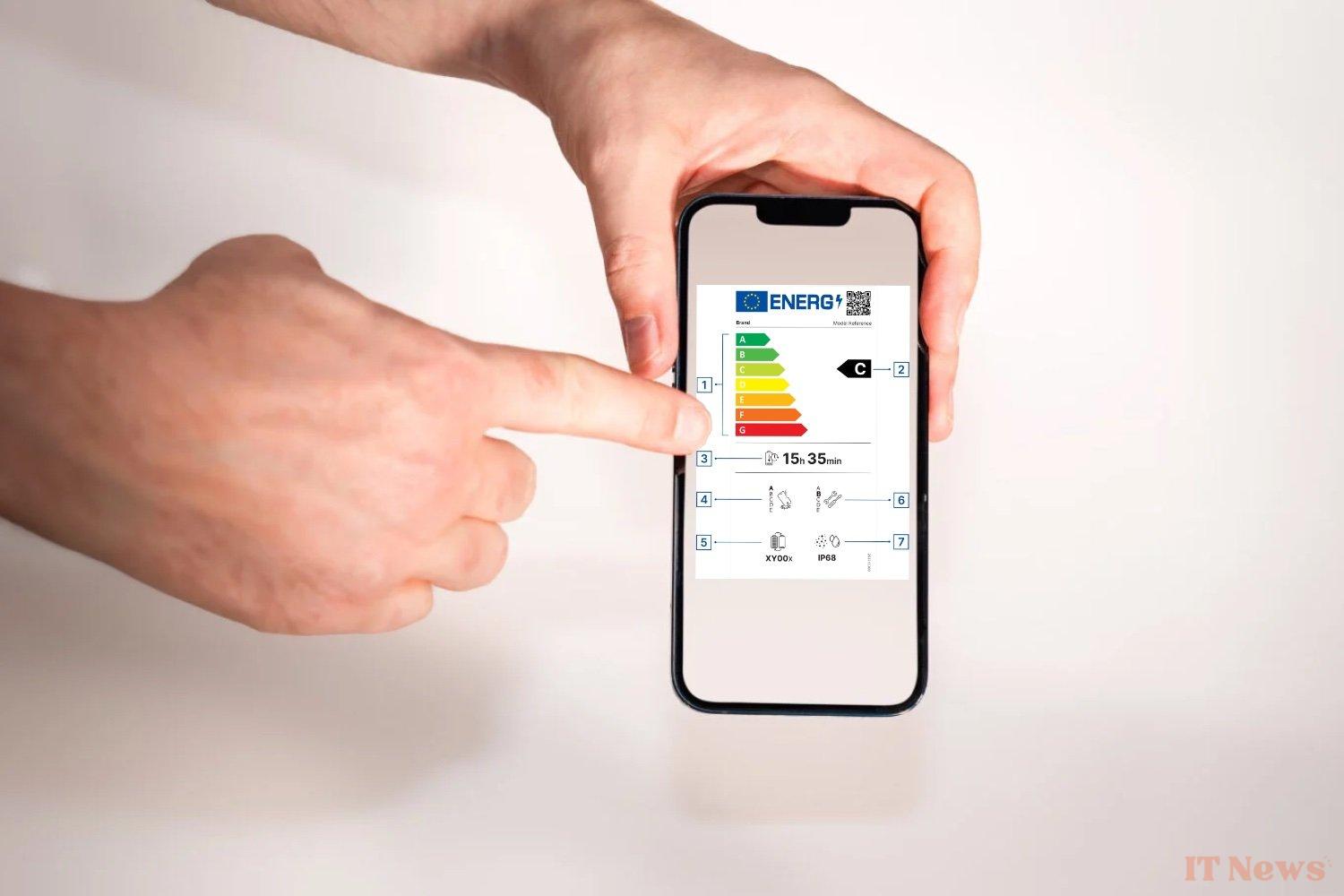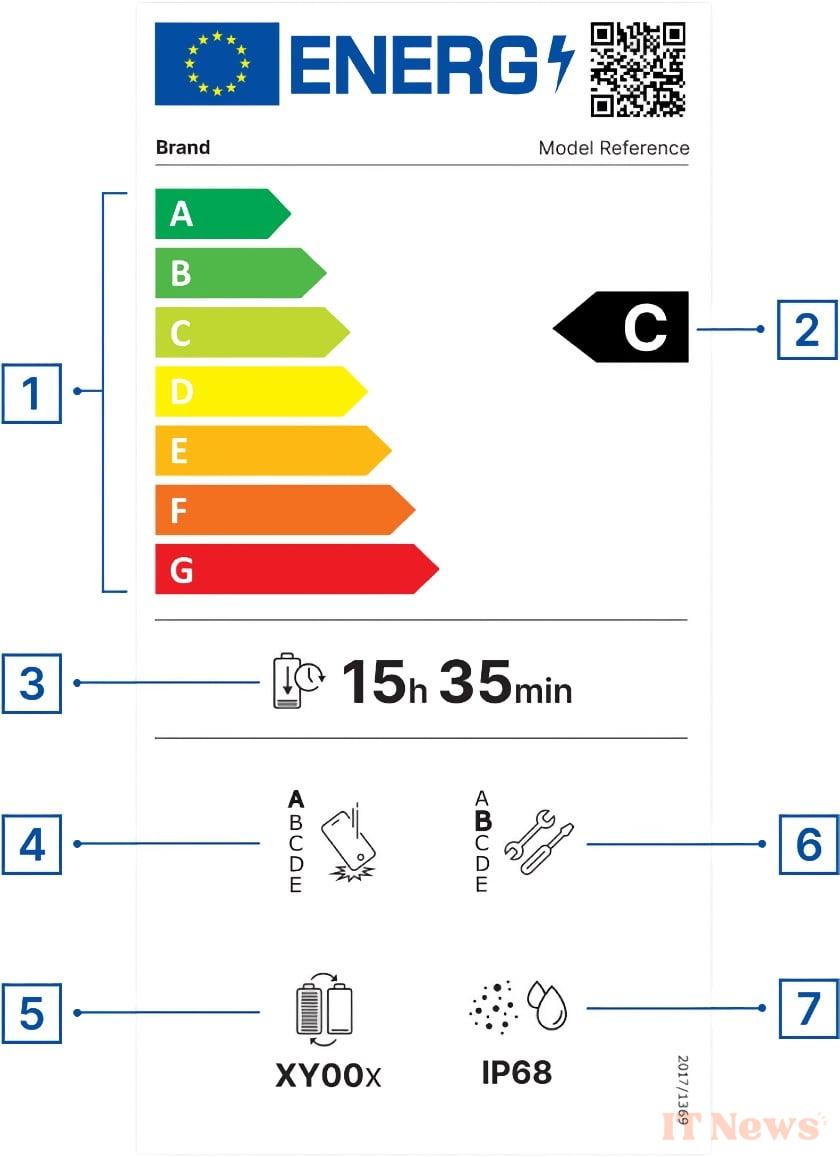Extending the lifespan of electronic devices is essential to reduce the impact of these products on the environment. And consumers obviously have a central role to play! They still need to be well informed.
A new label to keep in mind
Starting June 20, new ecodesign and energy labeling rules apply to smartphones (with 4- to 7-inch screens) and iOS or Android tablets without an integrated physical keyboard. Excluded are Windows tablets with a detachable or integrated keyboard, folding smartphones, and models designed for ultra-secure communications.
The most visible aspect will be the presence of a new label in the device box (or placed right next to it, visibly and unequivocally associated with the model in question). This includes several pieces of information: energy efficiency class (from A to G), autonomy per charge cycle, drop resistance, battery durability, repairability and level of protection against dust and water (IP rating).
The label will also include a QR code that will lead to the EPREL database (the European public register that centralizes technical information and energy labels for products subject to energy labeling) for more information.
The information on the label is presented either in the form of numbers (for autonomy) or letters. From A to G for energy efficiency, from A to E for drop resistance and repairability. The battery durability will be quantified with the number of cycles. This is one of the key aspects of the ecodesign regulation: batteries must retain at least 80% of their initial capacity after 800 complete charge and discharge cycles.
For their part, manufacturers must comply with new ecodesign requirements, such as robustness against drops and scratches, dust and water resistance, battery durability, ease of disassembly and repair (with the obligation to have spare parts available for 7 years after the end of marketing), software updates guaranteed for at least 5 years and fair access for professional repairers to diagnostic software tools.
The European Green Deal aims to increase the average lifespan of devices from the current 3 years to 4.1 years for mid-range smartphones. The EU estimates that these new measures will save 14 TWh of energy per year by 2030, or a third of the current consumption of these devices. This represents 0.09% of the total electricity consumed in the EU in 2020: it may not seem like much, but every effort is important!
Consumers should also benefit: households should save an average of €98 per year, for a total of €20 billion across the EU. This is also a good thing.
Source: European Commission




0 Comments